Research on Science and Technology Foresight
Overview of research
In Japan, the Science and Technology Agency began carrying out large-scale foresight surveys using the Delphi method [note] in the early 1970s. Subsequently, the surveys have been repeated about every five years. While in charge of the fifth (1992) through eighth (2004) surveys since the 1990s, NISTEP improved its forecasting technique based on the Delphi method, which has become a world standard. The STFC has cooperated with Germany and other countries to carry out surveys, and many other countries have conducted their own surveys by reference to NISTEP surveys.
- [Note]Delphi method:
Numerous experts are repeatedly surveyed with identical questions, with the results of previous rounds fed back to the respondents in order to draw out a consensus.
In FY 2003-2004, the STFC carried out the Science and Technology Foresight Survey ("Foresight Survey") using a Grant in Aid of Special Coordination Funds for Promoting Science and Technology. Based on the goal of providing basic information for discussion of the Third Science and Technology Basic Plan (FY 2006-2010), the STFC carried out this eighth Foresight Survey in continuous direct collaboration with the Council for Science and Technology Policy and the Ministry of Education, Culture, Sports, Science and Technology.
The eighth Foresight Survey comprised four studies. In addition to the Delphi survey that has been carried out in the past, it added three other surveys, a "socioeconomic needs analysis," a "study on rapidly developing research areas," and a "scenario analysis on the development of hot science and technology fields." The eighth survey is characterized by its combination of extrapolative methods and normative methods to analyze a wide range of targets, from basic science to socioeconomic needs.
Subsequent to the Foresight Survey, the STFC carried out additional follow up with bibliometric analysis. Furthermore, it held workshops on themes such as mathematics and robotics that the survey results suggested deserved further analysis. In addition, the STFC is addressing the development of new methods for comprehensive science and technology forecasting. Through links and cooperation with overseas foresight institutes, the STFC is serving as an international center of foresight research.
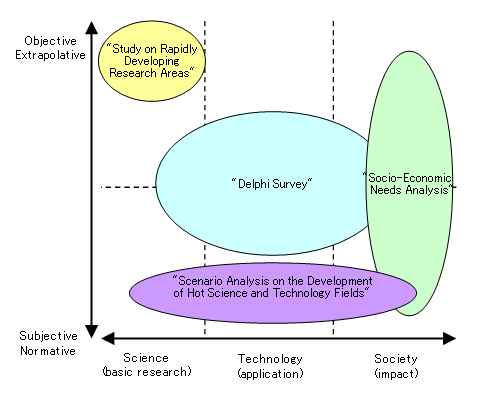
Structure of the eighth Foresight Survey
- Socioeconomic needs analysis
This analysis addressed the relationships between social/economic needs and current science and technology. It identified social/economic needs for which science and technology are expected to provide solutions mainly around 2015. During this process, the opinions of many people, not just science and technology experts, were sought through surveys of the public and forums for the public and businesspeople.
- Study on rapidly developing research areas
Using an international citation database, the study grouped scientific papers with co-citation relation (based on the idea that there is a connection between papers with a high number of simultaneous citations). The study extracted 153 areas with a rapidly-growing number of related papers (hot areas where research is rapidly progressing). Furthermore, the study analyzed Japan's presence in such research areas over time.
- Scenario analysis on the development of hot science and technology fields
This analysis looked over the coming 10-30 years to select about 50 themes and areas with a high social/economic necessity or the potential to produce radical new knowledge. After seeking recommendations from a broad array of relevant academic societies, two leaders in each area were selected and asked to write scenarios based on their individual expert opinions. The scenarios include current knowledge, expected development, and action that should be taken by Japan.
- Delphi survey
The new concept of "area" was introduced in this survey. Using a hierarchical structure of "field, area (groups of technologies that show the direction of a field's development), and topic (technology that typifies an area)", the STFC surveyed experts regarding 13 fields, 130 areas, and 858 topics. Regarding the areas, the survey examined expected impacts and Japan's R&D level. For the topics, the survey examined expected times of technical realization and social application and policies to promote them at each stage.
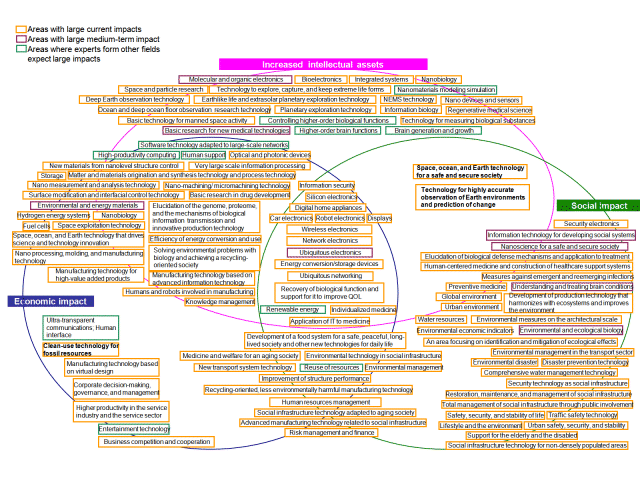
Areas with expected large impacts (from Delphi survey)
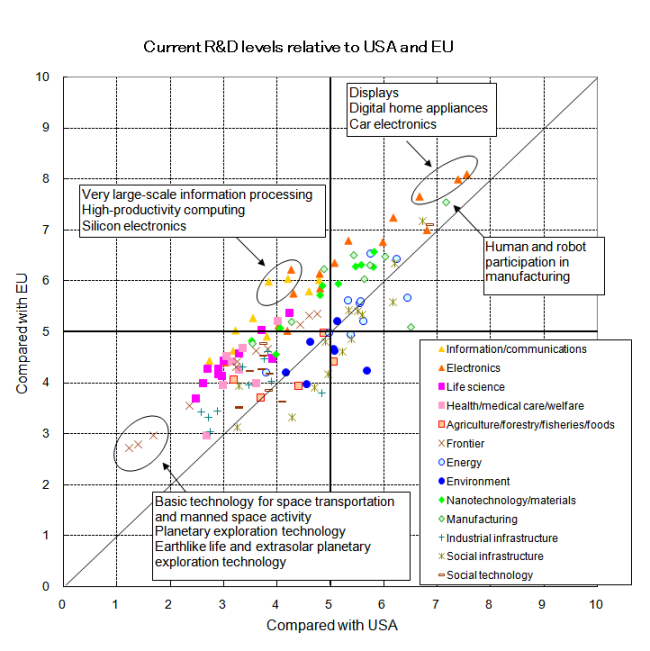
It is notable that Japan leads the EU in many areas in information and communications and nanotechnology and materials and leads both the USA and the EU in some, but trails both the USA and the EU in many life science areas.
R&D levels relative to USA and Europe (from Delphi survey)
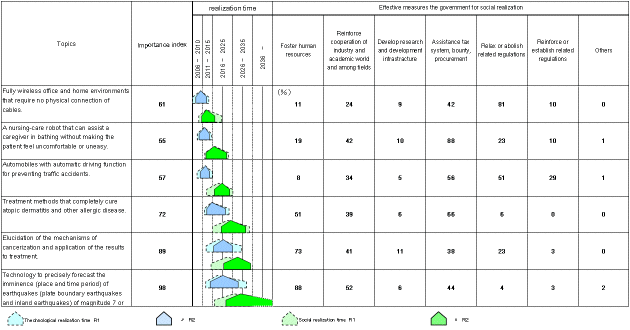
Results for topics (from Delphi survey)
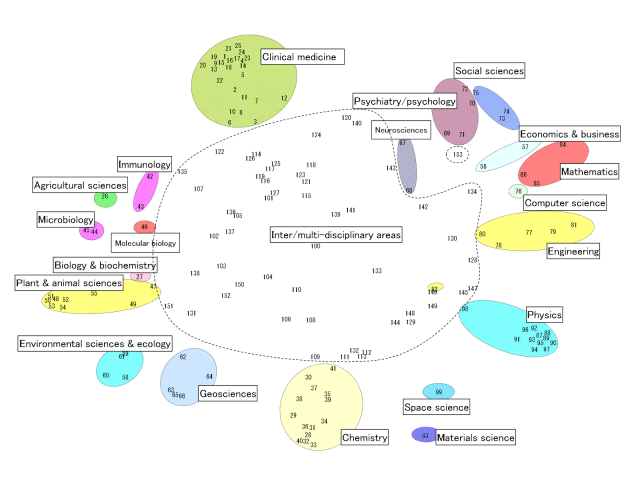
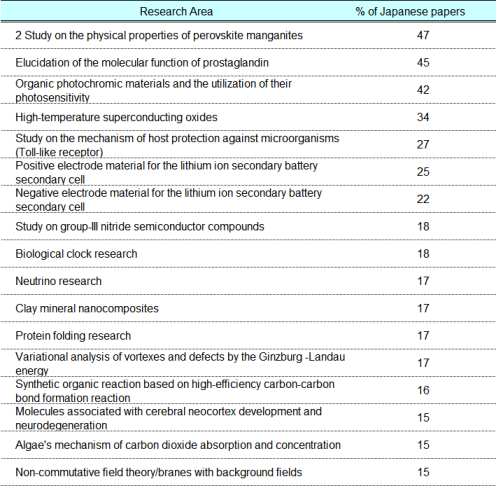
The core papers of 54 areas, about one-third of the 153 areas obtained through database analysis, are interdisciplinary and cross-field rather than belonging to a specific field. This indicates that a considerable number of rapidly developing research areas are interdisciplinary and cross-field in nature.
Chart (b) shows areas among the 153 where Japan's share of the core papers is greater than 15 percent. Detailed analysis of core papers found that Japan's presence is relatively large in research areas related to physics, chemistry, and plant and animal science. It also found a significant presence in interdisciplinary and cross-field areas.